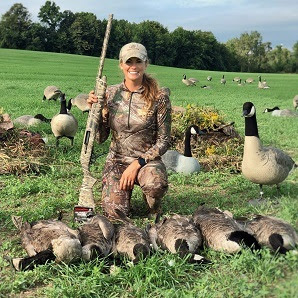
September Canada goose seasons occur in all goose hunting zones with the exception of the Western Long Island zone. All upstate areas run September 1 through September 25. Canada goose seasons in the Central and Eastern Long Island zones begin on the Tuesday following the Labor Day holiday (September 3rd this year) and run through September 30. In the Western Long Island zone, the season opens on October 12th.
The September seasons include liberal bag limits (eight to 15 birds/day, depending on the zone), extended shooting hours, and other special regulations to maximize hunter success. You can find additional details on waterfowl hunting regulations, season dates, hunting area boundaries, and bag limits on DEC's website.
To participate in the September Canada goose hunting season, hunters must:
1. Have a 2019-2020 hunting license;
2. Be registered for the 2019-2020 New York Migratory Bird Harvest Information Program; and
3. All hunters 16 years of age or older must have a 2019-2020 federal duck stamp (obtained at your local post office) signed across the face of the stamp in ink.
DEC reminds hunters to follow simple safety guidelines and use good judgment when choosing a time and place to hunt. Considering other people who enjoy the outdoors or live nearby can help avoid potential conflicts and ensure a safe and enjoyable season.
As coastal areas become more populated, it is important for new landowners to receive a good impression of the safety, ethics and traditions of waterfowl hunting. A little courtesy and time spent before a hunt can go a long way to avoid or minimize conflicts with property owners and other outdoor enthusiasts. DEC encourages hunters to:
- Consider contacting owners of property adjacent to where they will be hunting, well in advance;
- Tell property owners when and where you will be hunting. Property owners may be less concerned if aware of planned hunts;
- Take the time to explain to the landowner the intent to abide by the laws and regulations pertaining to waterfowl hunting, familiarity with the locations of houses, and safety protocols;
- Plan out shooting directions and verify that the selected spot to hunt is safe and in compliance with the law. Keep in mind that shot pellets, especially when discharged at a high angle, can sometimes travel farther than 500 feet;
- During conversations with landowners, identify any concerns the landowner may have and discuss them before you go hunting; and
- Leave hunting locations as clean as you found them, and be sure to pick up your empty shell casings and other litter you may find.